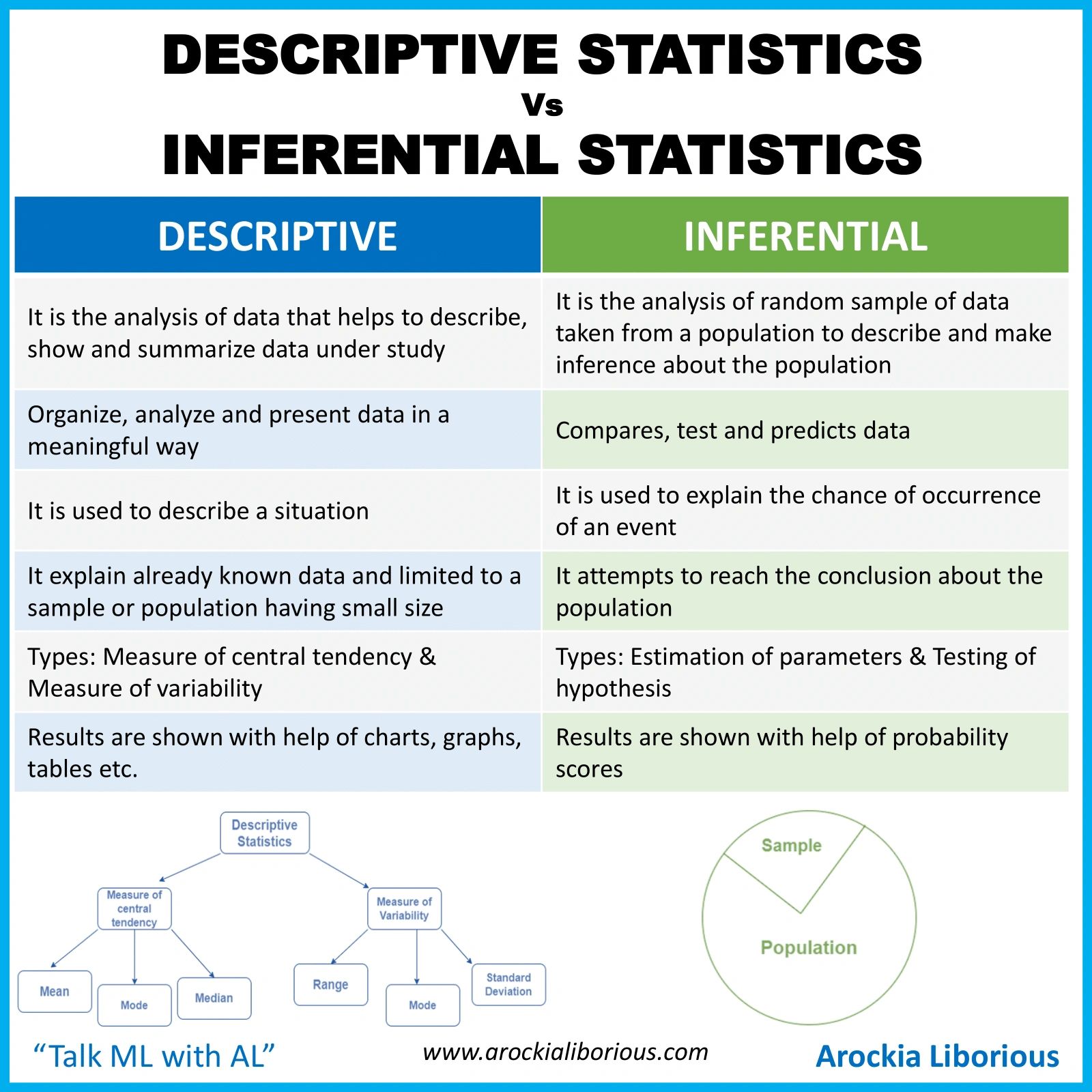
In inferential statistics predictions are made by taking any group of data in which you are interested. Inferential statistics involves you taking several samples and trying to find one that accurately represents the population as a whole.

Inferential allows you to test hypothesis from the descriptive data.
Explain inferential statistics give an example. Inferential Statistics Examples. There are lots of examples of applications and the application of inferential statistics in life. However in general the inferential statistics that are often used are.
Regression analysis is one of the most popular analysis tools. Inferential statistics is a technique used to draw conclusions and trends about a large population based on a sample taken from it. For example lets say you need to know the average weight of all the women in a city with a population of million people.
It isnt easy to get the weight of each woman. Inferential statistics is a statistical method that deduces from a small but representative sample the characteristics of a bigger population. In other words it allows the researcher to make assumptions about a wider group using a smaller portion of that group as a guideline.
Inferential Statistics Now suppose you need to collect data on a very large population. For example suppose you want to know the average height of all the men in a city with a population of so. In inferential statistics we use sample statistics to estimate population parameters.
For example if we collect a random sample of adult women in the United States and measure their heights we can calculate the sample mean and use it as an unbiased estimate of the population mean. An independent variable in one statistical model may be dependent on another. For example assume that we have a statistical model to identify the cause of heart disease.
Independent variables would be risk factors for heart disease. Cigarettes smoked per day drinks per day and cholesterol level. Inferential statistics describe the many ways in which statistics derived from observations on samples from study populations can be used to deduce whether or not those populations are truly different.
A large number of statistical tests can be used for this purpose. Which test is used depends on the type of data being analyzed and the number of groups involved. Explain the difference between descriptive and inferential statistical methods and give an example of how each could help you draw a conclusion in the real world.
Descriptive is summarizing data from a characteristic form. Inferential allows you to test hypothesis from the descriptive data. People often fail to properly distinguish between population and sample.
It is however essential in any statistical analysis starting from descriptive statistics with different formulas for variance and standard deviation depending on whether we face a sample or a population. Moreover the branch of statistics called inferential statistics is often defined as the science of. In a nutshell inferential statistics uses a small sample of data to draw inferences about the larger population that the sample came from.
For example we might be interested in understanding the political preferences of millions of people in a country. Example of inferential statistics. For this example suppose we conducted our study on test scores for a specific class as I detailed in the descriptive statistics section.
Now we want to perform an inferential statistics study for that same test. Lets assume it is a standardized statewide test. Techniques that allow us to make inferences about a population based on data that we gather from a sample.
Study results will vary from sample to sample strictly due to random chance ie sampling error. Inferential statistics allow us to determine how likely it is. Inferential statistics allow you to test a hypothesis or assess whether your data is generalizable to the broader population.
What are the 3 main types of descriptive statistics. The 3 main types of descriptive statistics concern the frequency distribution central tendency and variability of. Inferential statistics involves you taking several samples and trying to find one that accurately represents the population as a whole.
You then test that sample and use it to make generalizations about the entire population which in this case is every student within the school. There are two methods used in inferential statistics. The first involves estimating the parameter and the second involves testing the statistical.
In inferential statistics predictions are made by taking any group of data in which you are interested. It can be defined as a random sample of data taken from a population to describe and make inference about the population. Any group of data which includes all the data you are interested is.
TESTS FOR INFERENTIAL STATISTICS T-Test Can be used as an inferential method to compare the mean of the sample to the population mean using z-scores and the normal probability curve. You use t-curves for various degrees of freedom associated with your data. Degrees of freedom are the number of observations that vary around a.